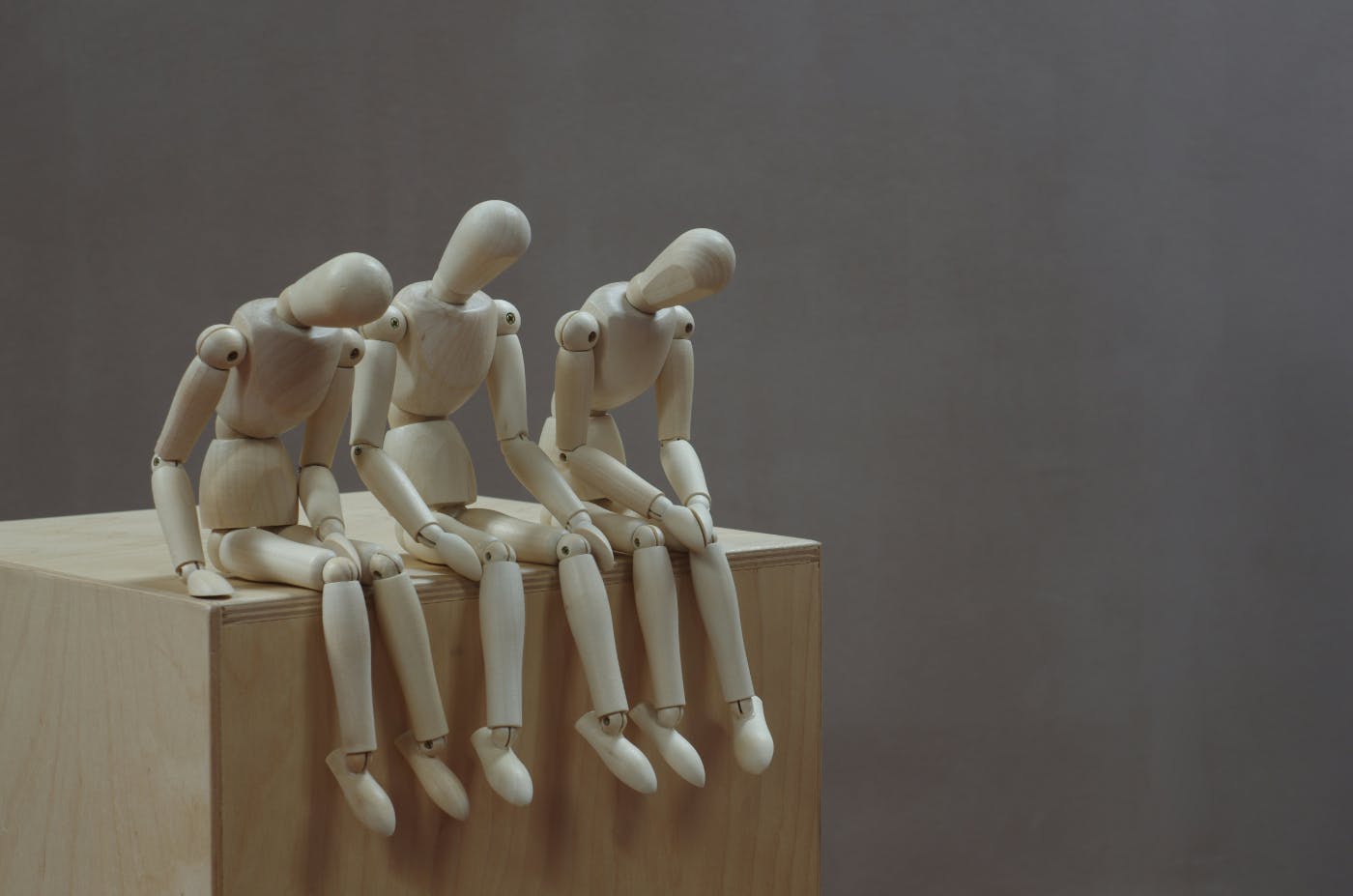
In Part 1 of The Loyalty Problem, we touched on decision fatigue as one of the silent killers of modern brand relationships. Today, we’re pulling that thread a little further.
Decision Fatigue Is Wrecking Your Customer Experience
You ever spend 30 minutes scrolling through Netflix only to give up and rewatch The Office again? That’s decision fatigue. Too many options, too much brain noise, and the eventual collapse of your will to care. It's not that the choices are bad. It's that there are too many, and your brain quietly files for retirement somewhere around option #17.
Now, apply that to your brand.
Because if your website, product catalog, or user flow feels like a choose-your-own-adventure maze with no map, you’re not impressing people—you’re exhausting them. And exhausted people don’t convert. They don’t engage. They don’t remember you. They move on to the next brand that makes life just a little bit easier.
In Part 1 of The Loyalty Problem, we touched on decision fatigue as one of the silent killers of modern brand relationships. Today, we’re pulling that thread a little further.
Because this problem isn’t going away. And if you’re not designing for decision clarity, you might be designing yourself out of your customers’ lives.
What Is Decision Fatigue?
Decision fatigue is what happens when your brain, faced with too many choices over time, starts to quietly short-circuit. It’s not dramatic. It’s not loud. But it’s very real. Each choice—no matter how small—requires effort. And as that effort stacks up, your ability to make thoughtful decisions starts to wear down.
At first, you’re fine. Confident. Alert. By the tenth decision, you’re still hanging in there. But by the twentieth? You’re choosing the nearest thing, the easiest thing, or nothing at all.
Now imagine that same mental fatigue hitting someone the moment they land on your homepage.
Do they click the pop-up or close it? Do they take the quiz? Do they explore the new collection or the featured collection? What’s the difference between these three nearly identical product bundles? Should they subscribe? What’s “Lite Pro Max Essential?” Why are there five nav menus?
Each one of those micro-decisions eats a little more mental energy. And it adds up fast.
We touched on this in Part 1 of The Loyalty Problem: in 2025, people aren’t disloyal—they’re tired. Their attention is already fragmented by a thousand other things. So when your brand adds even more complexity to their mental load, you’re not helping them—you’re pushing them away.
Decision fatigue is death by a thousand choices. And if you don’t design with that in mind, you’re not just making things complicated. You’re making yourself forgettable.

Why It’s Killing Brand Loyalty
Let’s say a customer visits your website. They’re intrigued. Curious. Maybe even emotionally available. But within seconds, they’re being asked to pick from three product lines, each with five variations, customizable options, bundled offers, a chatbot that says “hey,” and a banner that tells them they have 15 minutes to act before... something happens. No one’s sure what, but it sounds urgent.
That’s not engagement. That’s a panic attack in lowercase Helvetica.
And it’s doing real damage.
Because when a customer feels overwhelmed, their brain switches modes. Instead of exploring, they start escaping. Instead of trusting you, they begin questioning everything. Instead of feeling taken care of, they feel abandoned in a digital IKEA where every door leads to a new checkout line.
Loyalty, real loyalty, is built on emotional ease. When customers feel confident, safe, and understood, they come back. When they feel mentally fried before they even find the add-to-cart button, they leave. And they don’t just leave your site—they leave the relationship. They stop trusting that your brand has their best interest in mind. You become work. And no one is loyal to extra work.
It’s not a betrayal. It’s a quiet drift.
One that starts with too many choices and ends with, “Eh, I’ll just order from someone else.”
Decision fatigue doesn’t just ruin the moment. It erodes the possibility of a future.
Where Brands Overwhelm Instead of Simplify
No brand sets out to cause decision fatigue. No one in a marketing meeting says, “Let’s make the user question their life choices before checkout.” And yet… here we are.
Here’s where it often goes sideways:
The Menu Maze
You land on a site, and the main nav reads like the Table of Contents for a corporate manifesto. Home. Products. Solutions. The Solutions Within Our Products. Resources. About. About Our Resources. And then there's the dreaded “Explore” tab, which is just a black hole of dropdowns. By the time someone finds what they’re looking for, they’re not celebrating—they’re tired.
The Product Avalanche
You’re selling socks. Great. But now you’ve got twenty kinds. Each comes in seven colors. Three fabric blends. Four fits. There’s Classic, Sport, Flex, UltraFlex, and UltraFlex Lite. One has arch support. One has a pocket. One was engineered by someone who once looked at a foot. Congratulations, you’ve created the Baskin-Robbins of footwear—and your customer just wanted something warm and black.
Pop-Up Parade
Nothing like arriving on a site and being greeted with:
- a newsletter pop-up
- a discount pop-up
- a chat window
- a cookie disclaimer
- a “spin the wheel” game for a mystery prize
- and an autoplay video that doesn’t seem to pause unless you yell at it
Each one feels like a small interruption. But together? It’s a digital ambush. And it’s enough to make someone close the tab and quietly reconsider their interest in the internet altogether.
Endless Customization
Sure, personalization sounds great—until the customer is asked to choose their hair type, skin tone, preferred fragrance family, emotional state, favorite 90s sitcom, and Hogwarts house just to get a shampoo recommendation. At some point, this stops being helpful and starts feeling like a Buzzfeed quiz that refuses to end.
The “Choose Your Journey” UX Trap
You’ve seen it. A landing page that opens with four big tiles: “I’m here to learn,” “I’m here to shop,” “I’m here for support,” and “I have no idea how I got here.” It sounds friendly—but it’s a trap. Because now the customer has to decide what kind of customer they are before they even see a product. And if they guess wrong, they end up on a page that has nothing to do with what they wanted. That’s not journey-based navigation. That’s a choose-your-own-adventure novel where all the endings lead to mild regret.
These moments don’t seem like dealbreakers. But they’re the exact kind of friction that builds into frustration. And frustration is not fertile ground for loyalty.
The truth is most brands are not failing because their product is bad. They’re failing because interacting with them is unnecessarily complicated.

How Simplicity Builds Trust
Trust isn’t just about keeping promises or having ethical supply chains. It starts earlier—much earlier. Like, the moment a potential customer lands on your page and doesn’t feel the urge to immediately open a new tab and order something from Target instead.
Simplicity is a form of respect. It says, “We know your time is valuable. We’re not going to make you decode a new interface, open six support chats, or read a small novel to figure out which version of our product is slightly better than the others.”
Clean navigation, clear language, limited choices, and a predictable path forward—these are not basic features. They are trust builders. Every time a customer moves confidently from one step to the next without hesitation, your brand earns a tiny drop of credibility. Enough of those drops, and suddenly, you’ve got a real relationship.
Simplicity doesn’t mean boring. It doesn’t mean dumbing things down. It means designing with purpose. Curating instead of cluttering. Editing instead of showing off every bell and whistle you’ve ever developed.
Think of Apple. You don’t walk into an Apple Store and see 50 versions of the same thing. You see a few clearly positioned options and someone nearby who somehow manages to look both casual and wildly competent. It’s not about minimalism for its own sake—it’s about creating calm. Confidence. Clarity.
Or In-N-Out Burger, a brand so committed to simplicity that its entire menu fits on a napkin. People love it because it’s good and because it doesn’t ask them to overthink lunch. And let’s be honest: in a world of “chicken tender tacos on gluten-free croutons,” a simple burger is practically an act of rebellion.
Even Google—the company that knows literally everything—starts with a single, centered search box. That’s not a design accident. That’s strategy. It builds instant confidence by asking nothing more than, “What do you want to know?”
Simplicity creates momentum. And momentum builds trust. And trust, as we’ve said once or twice (or fifty times), is the foundation of actual loyalty.
What You Can Do About It
Look, you’re not going to solve decision fatigue with a single UX tweak or by removing three product variants and calling it a day. But you can start making choices that reduce cognitive load instead of adding to it. Because every little bit of mental friction you remove is one less reason for your customer to leave.
Here are some places to start:
Make fewer things do more.
Instead of offering ten slightly different versions of your product, ask what two or three options actually serve your customers best. Don't let "more choices" become a substitute for clarity.
Use plain language.
No one is wowed by “intuitive solutions for next-gen engagement ecosystems.” Say what you do. Say what it costs. Say why it matters. Bonus points if you can say it without sounding like a software robot trying to impress a boardroom.
Give one clear call to action.
Don’t give the customer five places to click with five different messages. Choose your priority. Want them to buy? Lead them there. Want them to learn more? Make that obvious. But don’t try to do both in the same breath—confused people don’t convert.
Respect the scroll.
Not everything needs to be crammed above the fold. If your content is good and the journey makes sense, people will keep going. Give your layout some breathing room. Let your message land before piling on another.
Test your flow like a tired person.
This is the secret sauce. Try navigating your site or app at the end of a long day on your phone, with a notification popping up, someone texting you, and your dog chewing something it shouldn’t. Can you still complete the task? Can you do it without wanting to yell? Congratulations—that’s usable.
Say no to unnecessary choices.
If it doesn’t help the customer make a better decision, cut it. Fewer paths, less friction, more confidence. Think of it as generosity through editing.
Remember, simplicity isn’t laziness. It’s refinement. It’s not about removing personality—it’s about removing confusion. Because nothing drives trust faster than a brand that makes things feel easy.

Summing Up
Decision fatigue doesn’t look like a broken brand moment. It looks like nothing. A closed tab. An abandoned cart. A customer who almost made it to the finish line but got tired somewhere around “Create an Account.”
It’s quiet. But it’s deadly.
In Part 1 of The Loyalty Problem, we called this out for what it is: one of the hidden killers of brand loyalty. Not because people are disloyal—but because people are overwhelmed. They’re busy. Distracted. Tired of being asked to make a hundred little choices just to buy shampoo.
And in that environment, the brands that win aren’t the ones with the most features or the most options. They’re the ones that show up clearly, confidently, and without demanding too much brainpower. The ones that know how to guide without overwhelming. That curate instead of flood. That respect their customers’ time and energy like the precious resources they are.
Because clarity builds confidence. Confidence builds trust. And trust—slow, quiet, earned—is the only foundation loyalty has left to stand on.
So if your customer journey feels like a quiz, a scavenger hunt, or a test of endurance... simplify. Edit. Breathe. Be the brand that makes things easier.
They’ll remember you for it.
And when they do? That memory becomes the starting point for something deeper—actual loyalty. This brings us to Part 2 of The Loyalty Problem, where we look at what brands get wrong about loyalty programs—and why points aren’t the answer.
Stick around.

